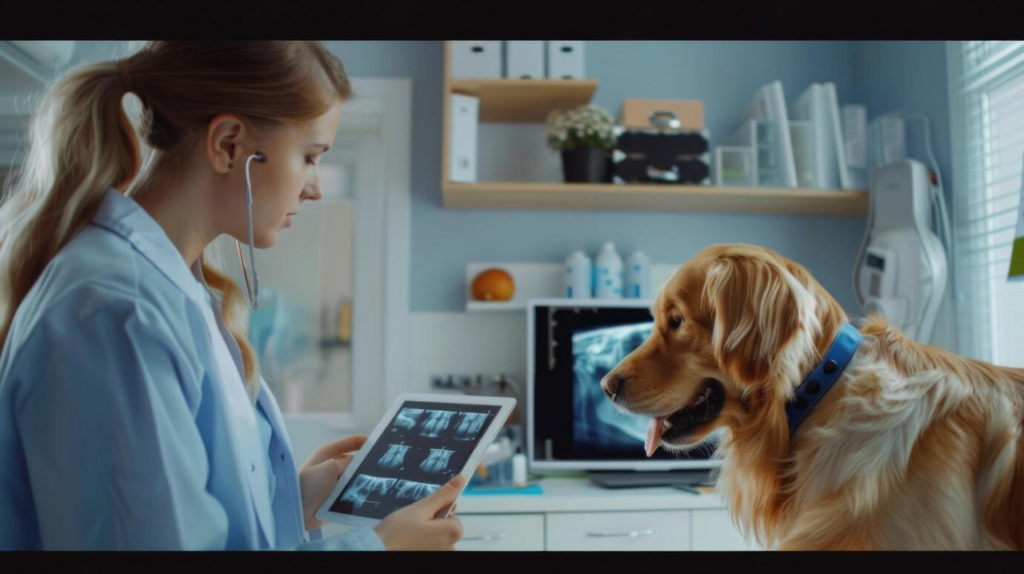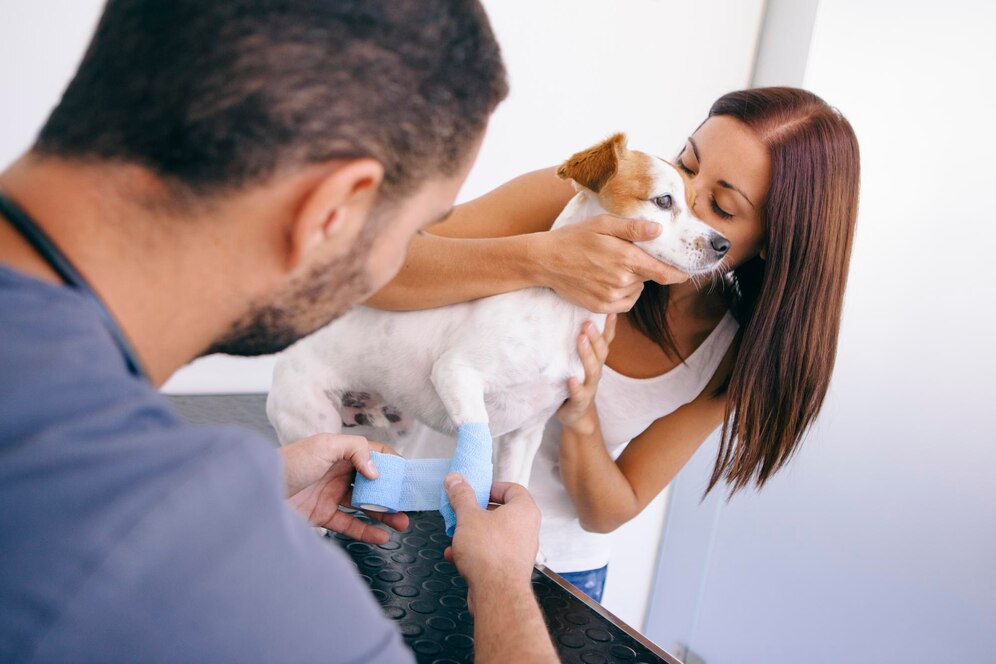The Pets Blog

Predictive Health Analytics for Pet Insurance: The Future of Pet Care Is Smarter Than You Think
Imagine this. You’ve just come home from work, greeted by your excitable Labrador, Charlie. He seems perfectly fine. Tail wagging, eyes bright. Small changes in his behaviour can show problems. For example, less activity, sleep problems, and an irregular heart rate show something is wrong. Your pet insurance app pings you: “We’ve found signs of early arthritis.” You might want to schedule a vet visit.”
That’s not science fiction—it’s predictive analytics in action.
Welcome to a new era! Your pet’s insurance policy now helps stop problems before they start, not just after they happen. Insurance providers use predictive analytics to spot health issues early. They can also create customised care plans and build more accurate, fair risk models.
This article examines how data tools and technology shape predictive analytics in pet care and insurance. We’ll share real-world case studies that improve the lives of pets and their owners.
What Is Predictive Health Analytics in Pet Insurance?
Understanding the Basics
Predictive health analytics uses data like historical, behavioural, and real-time information. This helps to predict health problems before they become serious. In the world of pet insurance, it means building models that can:
- Assess risk more accurately
- Tailor premiums to individual pets
- Improve preventative care
- Speed up diagnostics and interventions
These models rely on a mix of:
- Breed-specific data
- Vet health records
- Wearable health monitor insights
- Owner-reported behaviour patterns
Think of it as a digital crystal ball for your pet’s wellbeing—but one that’s grounded in real numbers, not guesswork.
Why the Traditional Pet Insurance Model Needed a Rethink
Traditional pet insurance, while well-meaning, often feels outdated:
- Flat-rate premiums based on age and breed
- Reactive care (you pay, they reimburse)
- Slow claims processes with lots of paperwork
- Minimal preventative insight
This “pay-as-you-go” model lacks personalisation and foresight. A healthy, active 10-year-old cat costs the same as a lazy cat with health problems. That’s hardly fair—or efficient.
Predictive analytics changes everything. It provides real-time support that fits each pet’s health journey.
How Predictive Analytics Is Reshaping Pet Insurance
Dynamic Risk Models: Smarter, Fairer Pricing
Gone are the days of “one-size-fits-all”. Predictive tools help insurers create risk profiles for pets. They adjust coverage and costs based on:
- Activity levels
- Diet and weight trends
- Environmental exposure (e.g. pollution, ticks, allergens)
- Genetics and family history
- Past health issues
Example: Two German Shepherds can be the same age. But if one has a family history of hip dysplasia and doesn’t get enough exercise, the risk model should show that. Predictive analytics enables this level of nuance.
Preventative Care: Stopping Illness Before It Starts

This is where predictive analytics truly shines.
By flagging early warning signs based on pattern recognition, insurers can help you:
- Book vet visits before symptoms escalate
- Get alerts for breed-specific risks (e.g. pugs and respiratory issues)
- Track recovery from illness or surgery more effectively
A US insurer used predictive models to spot early kidney disease in older cats. Using smart bowls and pet scales, they detected small changes in water intake and weight.
Behavioural Insights: Beyond the Vet Records
Health isn’t just about vet check-ups. It’s in how your pet eats, moves, sleeps, and interacts.
Predictive analytics integrates data from:
- Smart collars and GPS devices
- Feeding stations and litter boxes
- Behaviour tracking apps
These data points create a complete view of well-being and provide alerts that help you and your vet make better choices.
The Tech Behind the Trends: How It All Works
Machine Learning and AI
Predictive analytics relies on machine learning algorithms. These programs learn and get better by analysing large data sets over time.
For pet insurance, these algorithms:
- Identify correlations between data points and health outcomes
- Predict future incidents with increasing accuracy
- Continuously refine recommendations based on new data
Integration with IoT Devices
IoT technology includes smart collars, pet fitness trackers, and connected water bowls. These devices provide the system with real-time behavior data.
Insurers can now provide live health updates. They provide personalised wellness tips. They also change policies based on actual use and risk.
Big Data Aggregation
Insurers are also pooling anonymised data across pets to:
- Spot health trends by region or breed
- Detect outbreak clusters (e.g. dog flu in specific cities)
- Inform broader veterinary research and policy
This large amount of data enables quicker and smarter responses. Traditional models couldn’t handle this at scale.
Real-World Examples: Who’s Doing It Right?
ManyPets (UK/US)
- Uses behavioural data and claims history to recommend tailored plans
- Employs predictive tech to reduce claim rejections and offer proactive wellness tips
- Offers dynamic pricing based on pet lifestyle
Trupanion
- Integrates directly with veterinary software for real-time claim processing
- Predictive models suggest which conditions might be developing based on past visits
- Uses machine learning to catch errors and fraud automatically
Pawprint (App-based health management)
Pawprint isn’t an insurer, but it gathers your pet’s health data in one profile. It connects with vet records and wearables. This setup helps predictive tools work better.
Benefits for Pet Parents Like You
Here’s how predictive analytics helps you as a pet owner:
Imagine knowing before your dog gets diabetes that you can lower their risk. Just by changing their weight and activity, you can help them stay healthier.
That’s not just helpful—it’s life-changing.
Faster Claims, Less Admin, No more searching for papers or arguing about coverage.
With data-backed, automated systems, claims can be processed instantly.
Fairer Costs: Your premiums now show what your pet does, not just breed averages. If you’re proactive about your pet’s health, you’re rewarded.
Smarter Vets, Better Outcomes. Your vet benefits, too. With better data, they can spot problems faster. They can also track treatment progress more accurately.
Ethical and Privacy Considerations
All this data collection isn’t without concerns.
Data Security
Sensitive health and location data should be encrypted and protected. Choose insurers who:
- Are transparent about how data is used
- Offer opt-in models
- Comply with data protection regulations (e.g. GDPR)
Bias and Transparency in AI
Algorithms can reflect the biases of their creators. Ethical insurers must:
- Audit their systems regularly
- Use diverse data sets
- Provide human oversight to catch unfair exclusions
The Future of Pet Insurance: What’s Next?
As predictive analytics matures, expect even more transformation:
- Real-time wellness scoring for policy adjustments (much like telematics in car insurance)
- AI vet assistants offering instant health triage via chat
- Genetic data integration for deeper health forecasting
- Holistic coverage models blending insurance, preventative care, and lifestyle coaching
All of this will become increasingly accessible, not just a perk for premium users. Mass adoption is coming soon. It will make pets healthier, life easier, and insurance kinder.
Conclusion: From Reactive to Proactive Pet Care

The days of waiting for something to go wrong before your insurance kicks in are coming to an end. Predictive analytics is changing pet insurance. Now, it’s not just reactive. It’s smart, caring, and looking to the future.
As a pet parent, you deserve more than cookie-cutter coverage and confusing claims. Your furry friend needs a care plan that grows with them. This plan finds problems early. It also encourages good habits and helps you live longer and happier.
Ready to step into the future of pet care?
- Look for insurers embracing predictive technology.
- Consider adding a smart tracker to your pet’s daily routine.
- Ask your provider how your data is used and protected.
Your pet is already one of a kind—now their insurance can be too.









